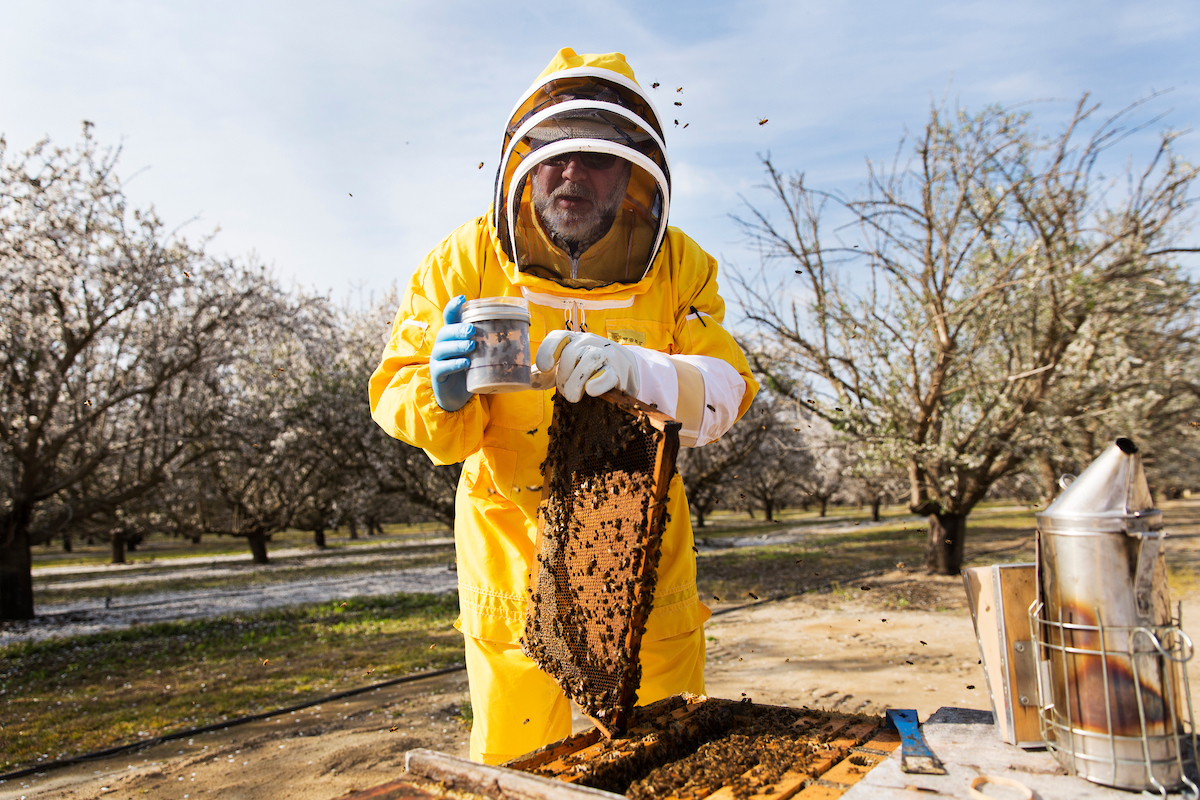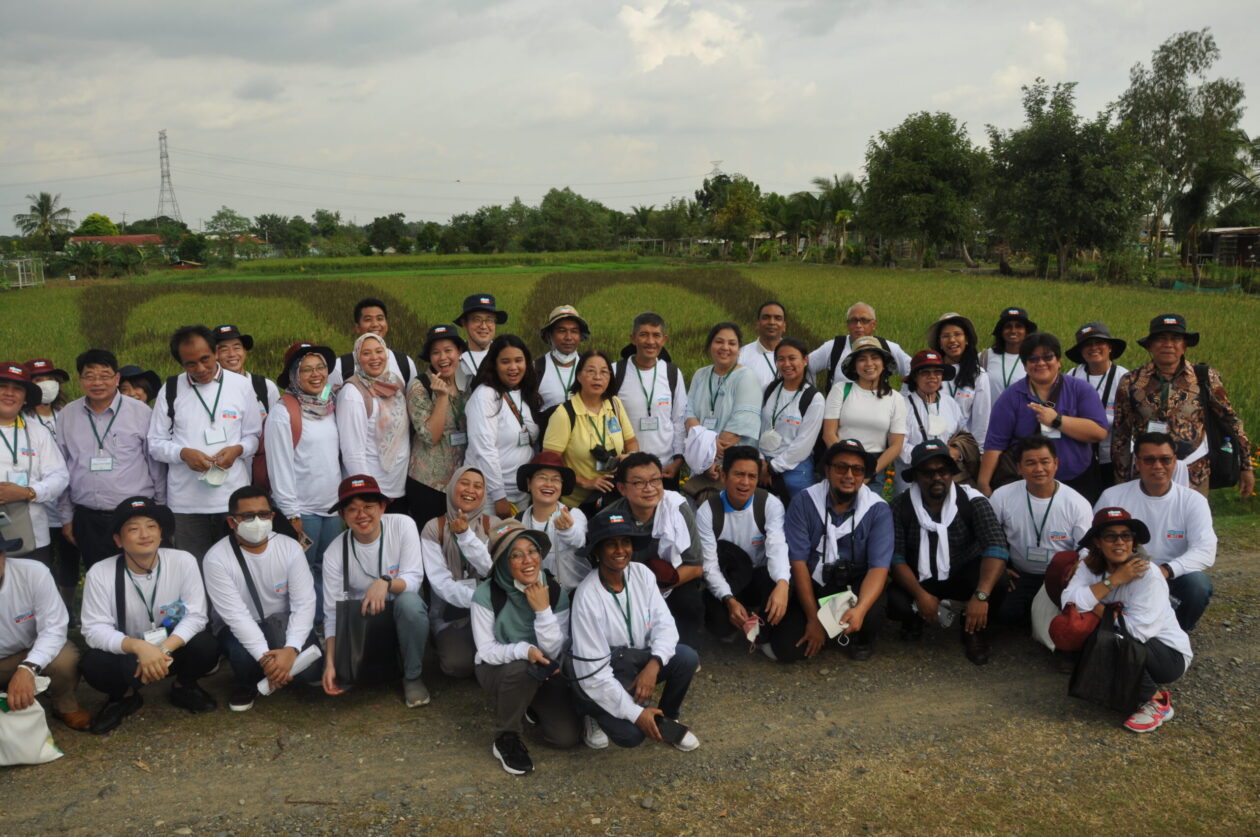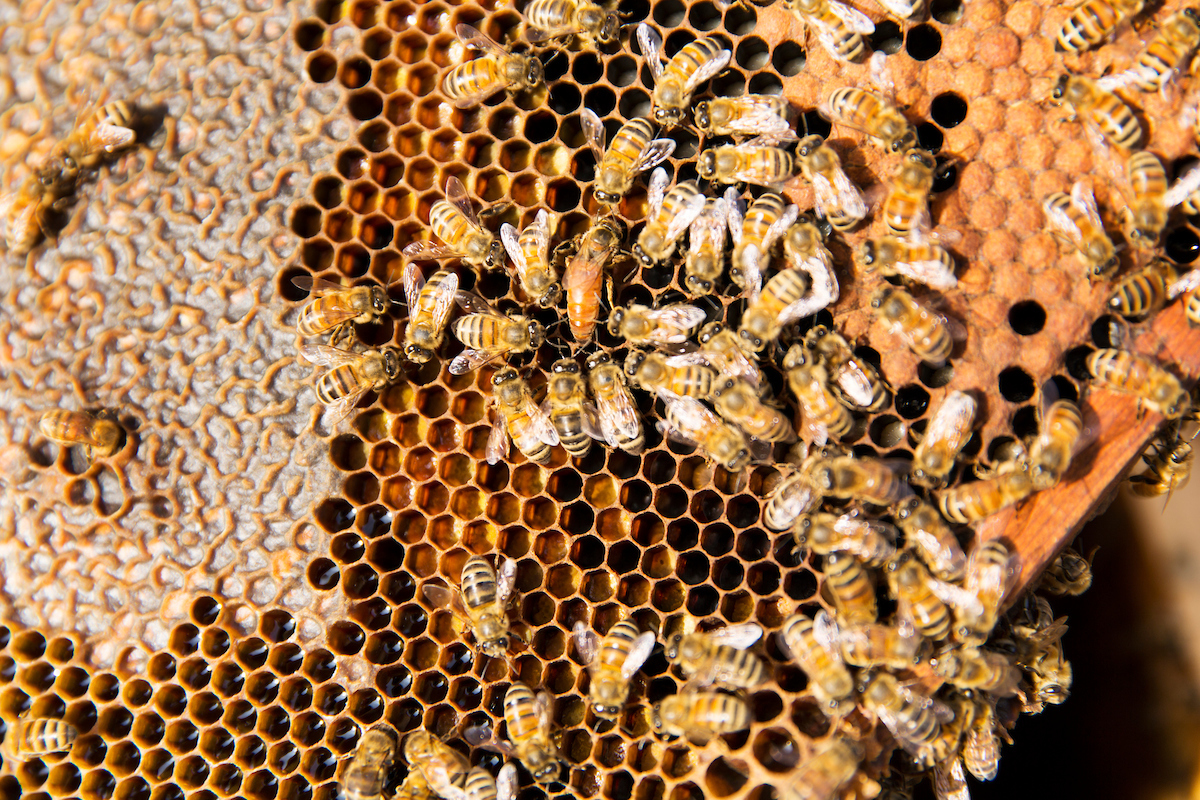By: CropLife International
More than 80 percent of the world’s almonds come from California and they rely entirely on pollination from honey bees to deliver a successful crop; roughly 1.6 million colonies are required every bloom period to pollinate the crop. Unfortunately, honey bees are being threatened there and other geographies by several factors – perhaps the most dangerous of which is a parasitic mite called the Varroa destructor. CropLife International “Food Hero” Dick Rogers, manager of the Bayer Bee Health Research Program in Raleigh, N.C., USA, discusses his efforts to fight the mite and protect pollinators in almonds.

Dick Rogers, the manager of the Bee Care Center Bee Health Research Program in Raleigh,
North Carolina, opening bee hives to check for mites, Shafter, California.
Why does the California almond industry need so many honey bees?
The sheer size of the crop means there can’t be enough local honey bees to pollinate it. Farmers need to supplement with managed [commercial] pollinators like honey bees, which are easy to increase in number to meet that demand. In a scenario where there are no bees for pollinating almonds, there probably would not be any commercial crop.
How many bee colonies per acre are needed to pollinate almonds?
The general recommendation is to use two colonies of honey bees [roughly 40,000-100,000] for each acre of almonds. That’s true for most crops, one to two colonies per acre, but some crops like blueberries can go up to 10 colonies per acre.
Why are Varroa mites such a threat and what is being done to combat them?
If you have a Varroa mite infestation [usually after three or four years], you are 100 percent guaranteed to lose your colony. We are working on mite management tactics, including treatments. We’re developing new varroacide compounds to control mites because beekeepers need more tools.
What is a varroacide and how are you developing it?
A varroacide is a class or group of chemicals used to control Varroa mites. There are already products on the market; some work better than others and some don’t work as well as they once did, so we are trying to find new compounds to circumvent insect resistance. We’re looking at both natural and synthetic compounds. We have nine candidate compounds that may have enough potential to develop as new products.
How is the varroacide distributed?
Plastic strips with the varroacide are placed in the hives. The varroacide is transferred to mites by bees walking over the strips, picking up molecules of the active ingredient and then passing it around the hive. The strips do not break down in the hives and are effective for 42 days.
Is there concern about the mites becoming resistant to the varroacide?
The mite can become resistant if a compound is used too frequently. Some formerly effective products now show resistance in certain instances, so they are used less and less. If we’re going to find new products, we need to know which compounds the mites can tolerate and which they can’t.
Is it difficult to develop a varroacide that doesn’t affect honey bees?
To develop a treatment for mites is quite a tricky undertaking because you want it to be effective on the mites, but not against the bees. We have to come up with a dose that targets the mite only.
How would a new varroacide help almond farmers?
It would make bees more readily available. It would also help beekeepers expand their operations and increase colonies without having to deal with damage caused by the mites. If they had healthy bees because of an effective treatment, they could do a lot more, allowing for larger numbers of better quality bees with longer lives. That would indirectly help almond growers because there would be a more guaranteed supply of bees.
This article and the images included were published and created by CropLife International. See original post here.

